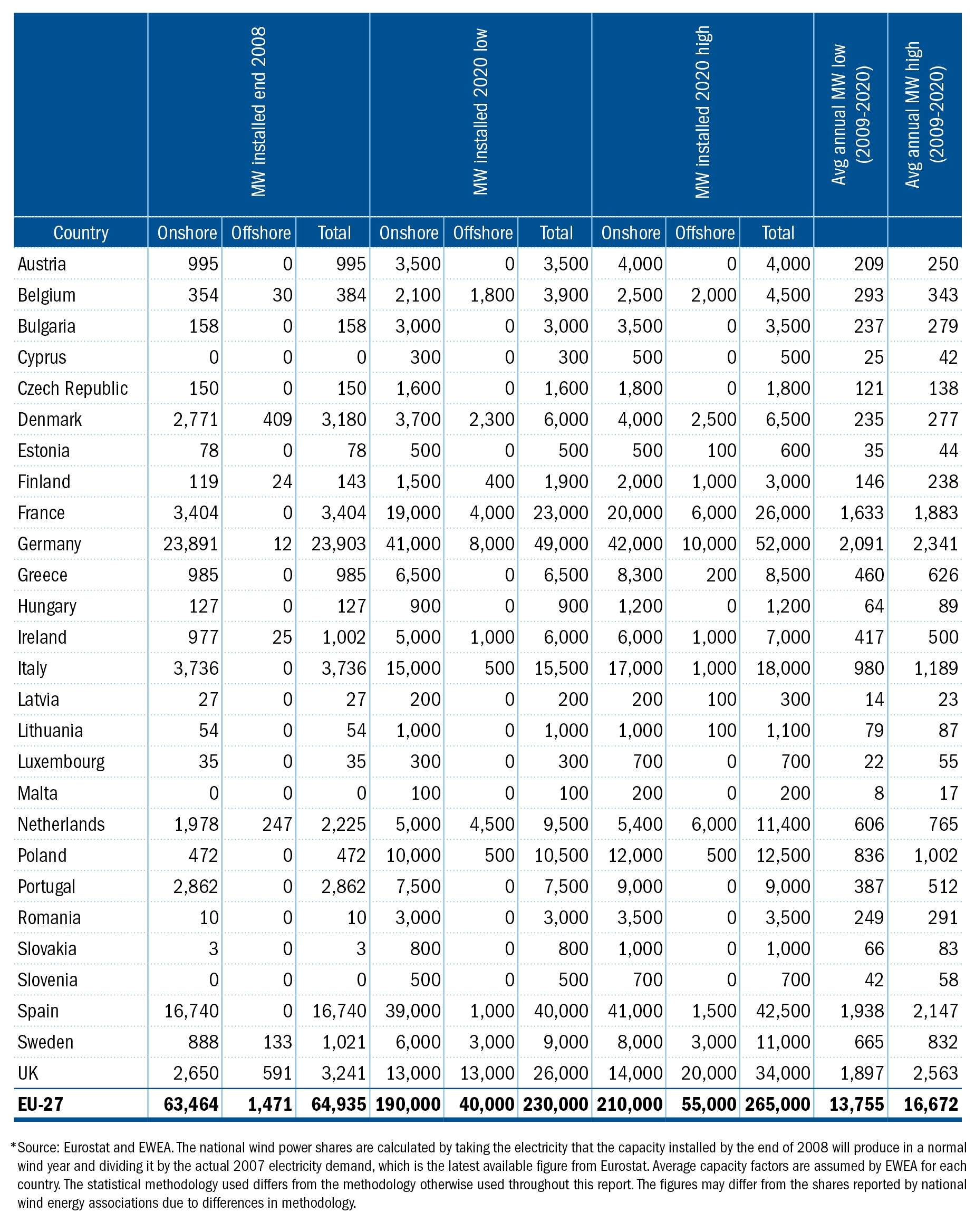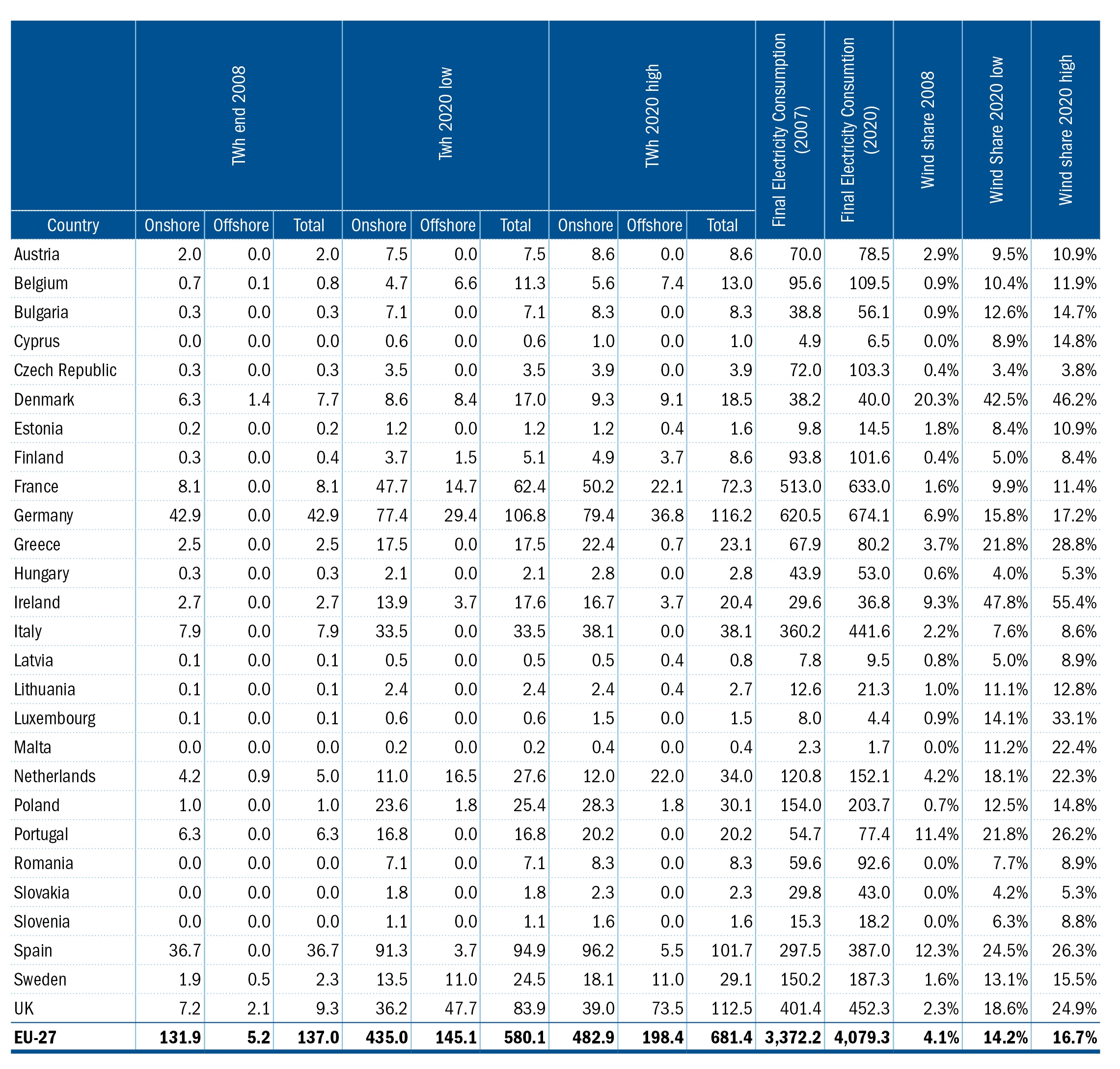MAIN PUBLICATION :
| Home � SCENARIOS & TARGETS � Scenarios for the EU-27 � Chapter 1: Scenarios for the EU-27 |

|
CHAPTER 1: SCENARIOS FOR THE EU-27
While EWEA is confident that its predictions for wind power capacity in the EU to 2010 will be met, there is uncertainty about the projections for 2020 and 2030. The likelihood of a significant market for offshore wind power has been pushed beyond the 2010 timeframe, predominantly as a result of strong onshore wind market growth in the USA, China and India in recent years. However, the strong EU regulatory framework and Member States’ requirement to reach binding renewable energy targets will be key factors in boosting wind power deployment in the EU.
EWEA has analysed the wind energy markets in the 27 EU Member States and the results are presented in the form of two 2020 scenarios for each national market: a “low” scenario and a “high” scenario.
The “low” scenario is based on EWEA’s traditionally conservative approach to setting future targets for wind energy. It assumes a total installed capacity of wind energy in the EU by 2020 of 230 GW, producing 580 TWh of electricity.
The “high” scenario acknowledges that wind power – as the most affordable of the renewable electricity technologies – is likely to meet a much higher share of the EU’s Renewable Energy Directive target than the 12 per cent of electricity demand by 2020 indicated by the European Commission (see: Source: EU 2009). For many of the countries, the “high” scenario also takes into account wind power targets already announced by national governments. In the “high” scenario, total installed wind power capacity will reach 265 GW by 2020, producing 681 TWh of electricity.
Fig 1.1: Two Scenarios up to 2020 *


Source: EWEA (2009): Pure Power, p.12f
It is assumed that the average capacity factor of all wind turbines in the EU will increase from 24.1 per cent in 2008 to 24.7 per cent in 2010, 28.9 per cent in 2020 and 33 per cent in 2030. The increase will be due to better design, exploiting the resources in more windy areas of Europe, technology improvements and a larger share of offshore wind. In Germany, average capacity factors will only start increasing if older turbines are replaced and offshore wind power takes off. It should be noted that for a technology that makes use of a free resource, a high capacity factor is not a goal in itself.
It is not technically problematic to increase capacity factors, but doing so affects grid integration, modelling and generation costs.
| Acknowledgements | Sitemap | Partners | Disclaimer | Contact | ||
|
coordinated by  |
supported by  |
The sole responsibility for the content of this webpage lies with the authors. It does not necessarily reflect the opinion of the European Communities. The European Commission is not responsible for any use that maybe made of the information contained therein. |
